当前位置:网站首页>Pointnet / pointnet++ point cloud data set processing and training
Pointnet / pointnet++ point cloud data set processing and training
2022-07-04 19:49:00 【Master Ma】
One 、 Representation of 3D data
The expression forms of three-dimensional data are generally divided into four :
① Point cloud : from N individual D Point composition of dimension , When this D = 3 It usually means ( x , y , z ) Coordinates of , Of course, it can also include some normal vectors 、 Strength and other characteristics . This is the main data type today .
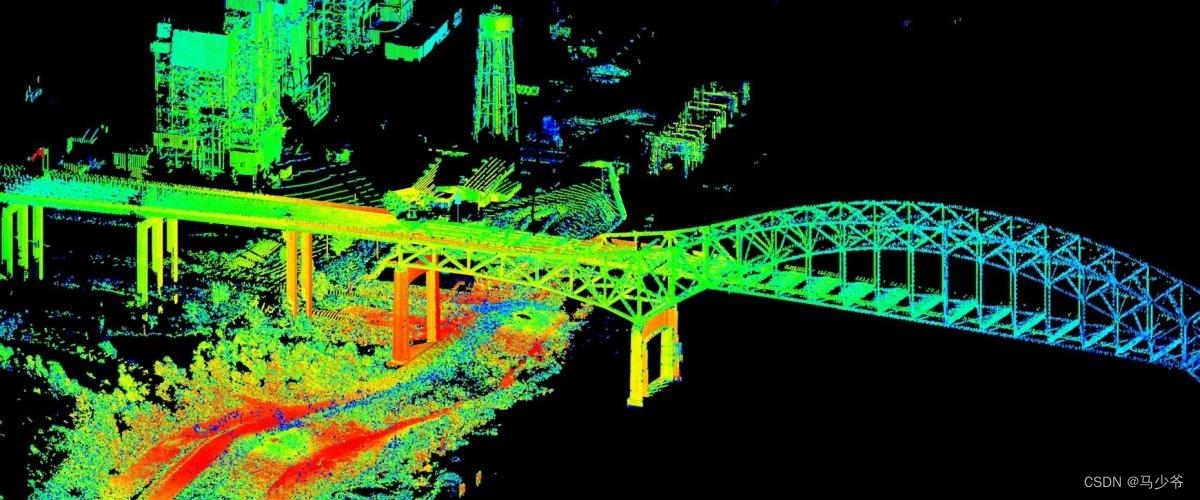
② Mesh: It consists of triangular patches and square patches .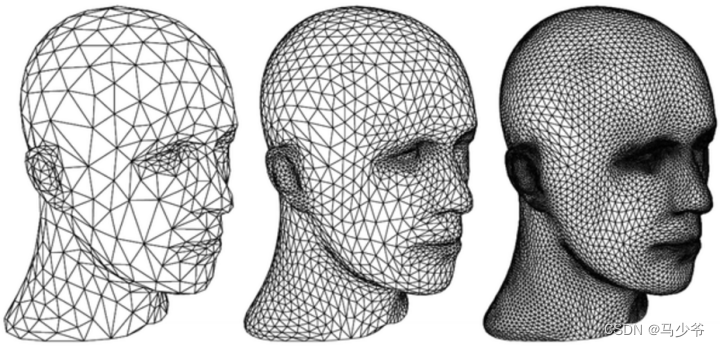
③ Voxel : Use the three-dimensional grid to use 0 and 1 characterization .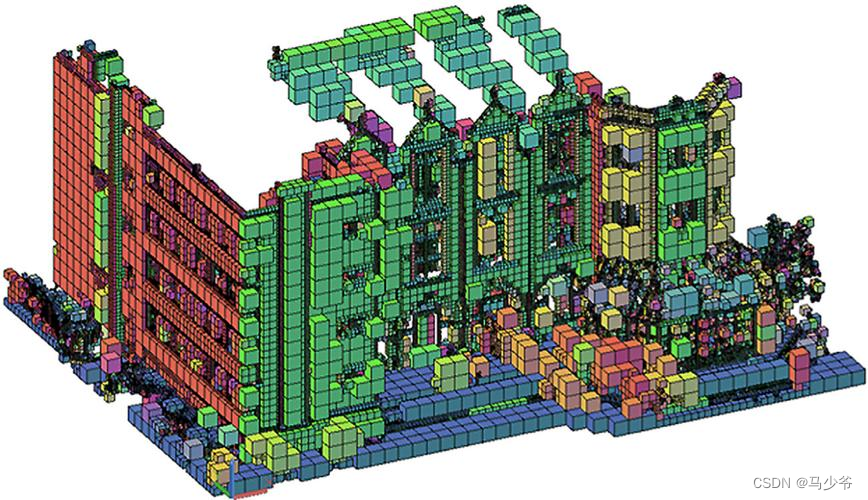
④ Multi angle RGB Image or RGB-D Images 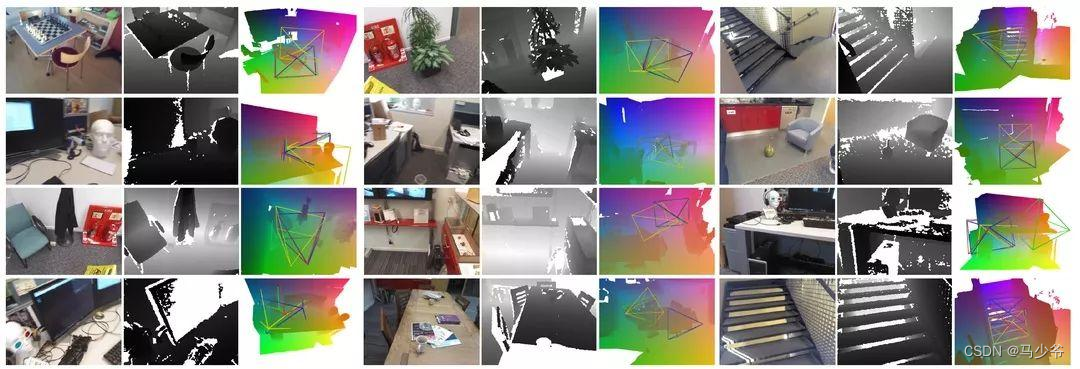
And because the point cloud is closer to the original representation of the device ( That is, radar scans objects to directly generate point clouds ) At the same time, its expression is simpler , An object uses only one N × D The matrix representation of , Therefore, point cloud has become the most important of many 3D data representation methods . Mapping 、 Architecture 、 Electric power 、 Industry and even the most popular fields such as automatic driving are widely used .
Two 、 Point cloud segmentation data set processing
Our point cloud data may be inconsistent with the data required by the model , So you need to write your own script to standardize the data . The standard point cloud data processing format is as follows :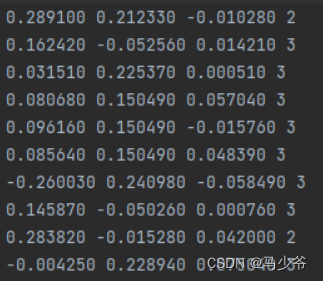
It only contains point cloud (x,y,z) Coordinates and labels corresponding to each point . And maybe we start from CloudCompare There are four columns of data and one column of point cloud intensity information :
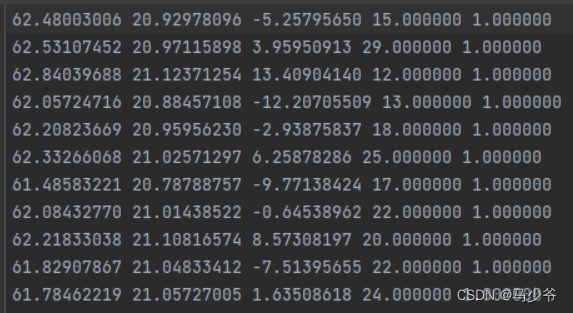
So write the following script to remove the redundant fourth column data ( The specific path of the file is set by yourself ):
# -*- coding:utf-8 -*-
import os
filePath = 'D:\\ Point cloud data processing team \\pointnet-my\\data\\shapenetcore_partanno_segmentation_benchmark_v0_normal\\03797390'
for i,j,k in os.walk(filePath):
for name in k:
print(name)
f = open(filePath+name) # open txt file
line = f.readline() # Read the file as a line
list1 = []
while line:
a = line.split()
b = a[0:3]
c = float(a[-1])
print(c)
if(float(a[-1])==36.0):
c=2
if(float(a[-1])==37.0):
c=3
b.append(c)
list1.append(b) # Add it to the list
line = f.readline()
f.close()
print(list1)
with open(filePath+name, 'w+') as file:
for i in list1:
file.write(str(i[0]))
file.write(' '+str(i[1]))
file.write(' ' + str(i[2]))
file.write(' ' + str(i[3]))
if(i!=list[-1]):
file.write('\n')
file.close()
# path_out = 'test.txt' # new txt file
# with open(path_out, 'w+') as f_out:
# for i in list1:
# fir = '9443_' + i[0] # Prefix the first column '9443_'
# sec = 9443 + int(i[1]) # Add... To the values in the second column 9443
# # print(fir)
# # print(str(sec))
# f_out.write(fir + ' ' + str(sec) + '\n') # Write the first two columns into the new txt file
Then we need to divide the training set 、 Test set 、 Verification set of json Document processing , Because we use our own data set , every last txt The file name of must be different from that in the previous official data set , So you need to write a script to control the training set 、 Test set 、 Verify the three... Read in by the set json File modification . The specific code is as follows ( The path name also needs to be modified to its own path name ):
import os
filePath = 'D:\\ Point cloud data processing team \\pointnet-my\\data\\shapenetcore_partanno_segmentation_benchmark_v0_normal\\03797390'
##### On the last line, there will be a , Report errors !!!!!!!!!
###### Manually delete or improve programs
#####
file = '1.txt'
with open(file,'a') as f:
f.write("[")
for i,j,k in os.walk(filePath):
for name in k:
base_name=os.path.splitext(name)[0] # Remove the suffix .txt
f.write(" \"")
f.write(os.path.join("shape_data/03797390/",base_name))
f.write("\"")
f.write(",")
f.write("]")
f.close()
Finally, when the actual program is running, it is found that it will contain 0 Too much data leads to inaccurate model classification , as follows :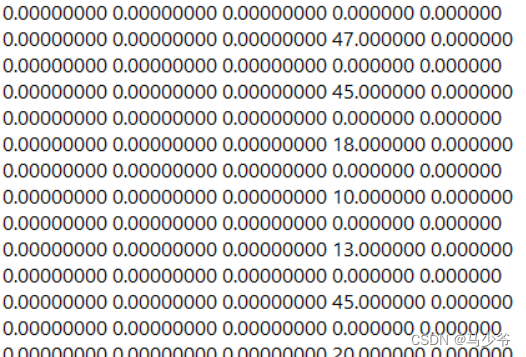
According to the actual physical meaning of the specific project ( All the people here 0 That is, the position not detected by the laser ,x,y,z The coordinates are marked 0), So writing scripts is right for all 0 Remove the part of :
# -*- coding:utf-8 -*-
import os
filePath = 'D:\\ Point cloud data processing team \\pointnet-my\\data\\shapenetcore_partanno_segmentation_benchmark_v0_normal\\03797390'
for i,j,k in os.walk(filePath):
for name in k:
list1 = []
for line in open(filePath+name):
a = line.split()
#print(a)
b = a[0:6]
#print(b)
a1 =float(a[0])
a2 =float(a[1])
a3 =float(a[2])
#print(a1)
if(a1==0 and a2==0 and a3==0):
continue
list1.append(b[0:6])
with open(filePath+name, 'w+') as file:
for i in list1:
file.write(str(i[0]))
file.write(' '+str(i[1]))
file.write(' ' + str(i[2]))
file.write(' ' + str(i[3]))
file.write(' ' + str(i[4]))
if(i!=list[-1]):
file.write('\n')
file.close()
3、 ... and 、 model training
We open model Folder , Choose to pointnet2_part_seg_msg In the name of python file , Double click in :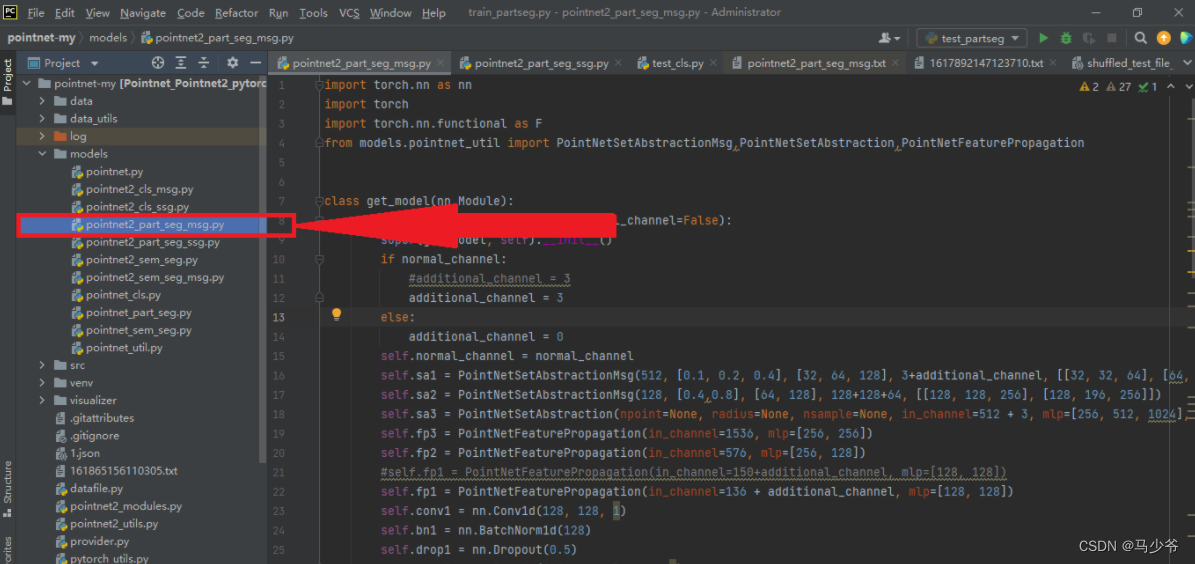
Next, we need to modify PointNetFeaturePropagation Of in_channel, The specific method is 128+4 Total number of classes divided , For example, our segmentation here uses two objects , Each object is 2 classification , So the number of channels is 128+42=136:
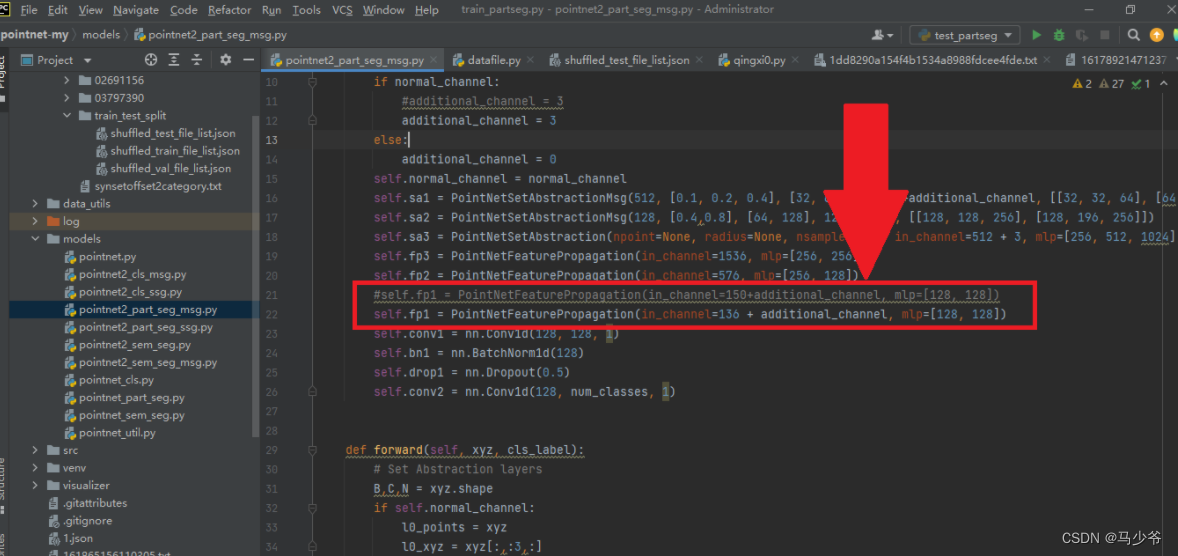
Next, we need to modify the part of the independent heat coding , take view The second parameter in the method is modified to the number of types of objects to be segmented :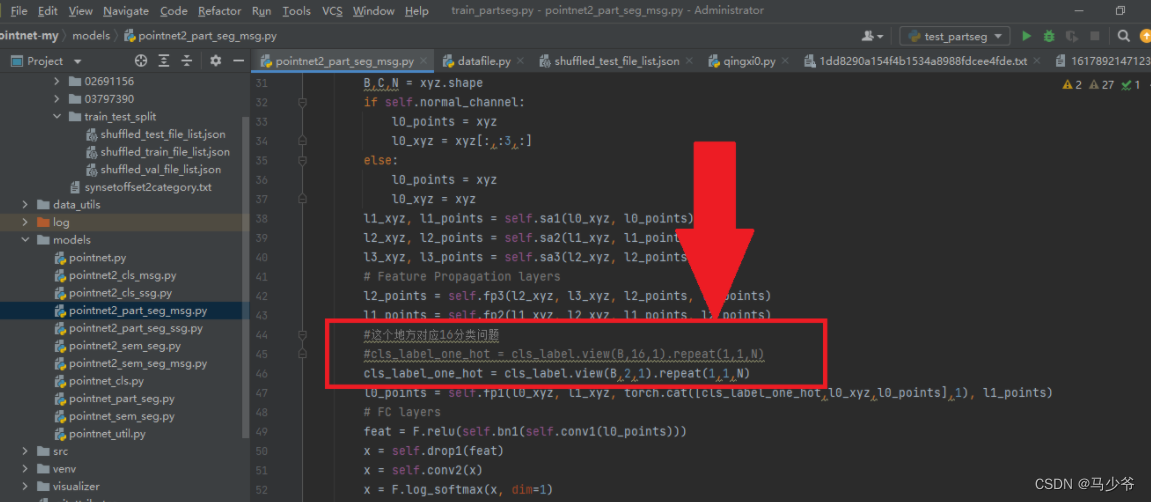
2.2.5 Modification of training model
In training the model , We need to modify the objects to be classified seg_classes For the category corresponding to our own dataset , For example, the classification in the example includes two categories , Each category has two components .( For convenience , We keep the original ’Airplane’: [0, 1], ‘Mug’: [2, 3] These two names , At the same time, we should pay attention to it , The number should be from 0 Start numbering in sequence , If not, an error will be reported ), At the same time, you should pay attention to whether your computer supports it cuda Speed up , without GPU, You can put all the following code ".cuda()" delete , The program can run correctly .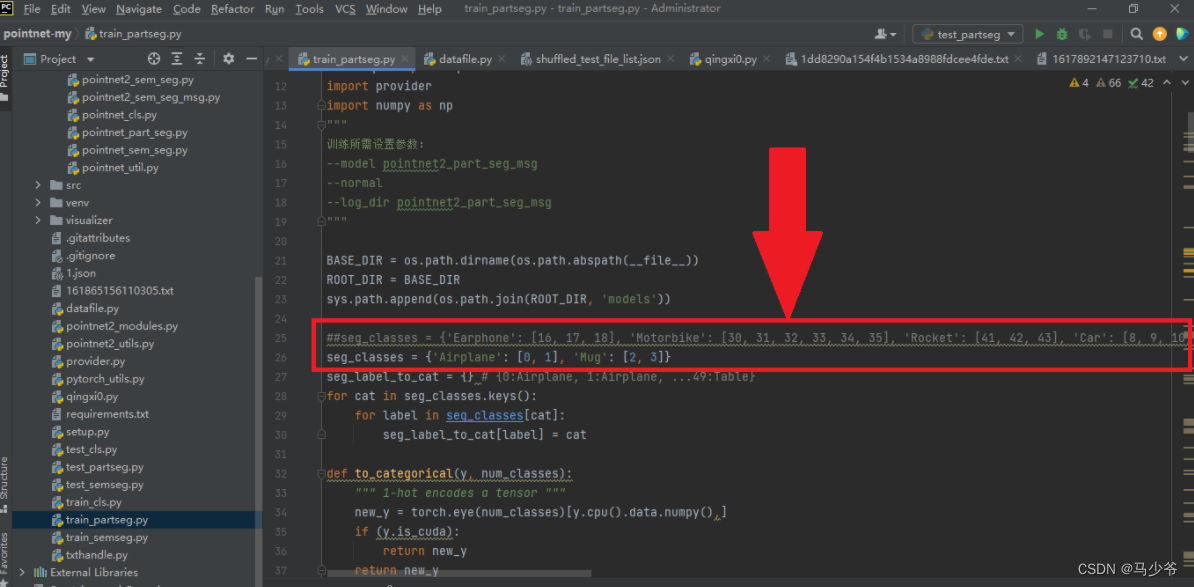
Next, we need to modify the total number of segmented objects num_classes Number your categories , The total number of parts is your total number :num_part.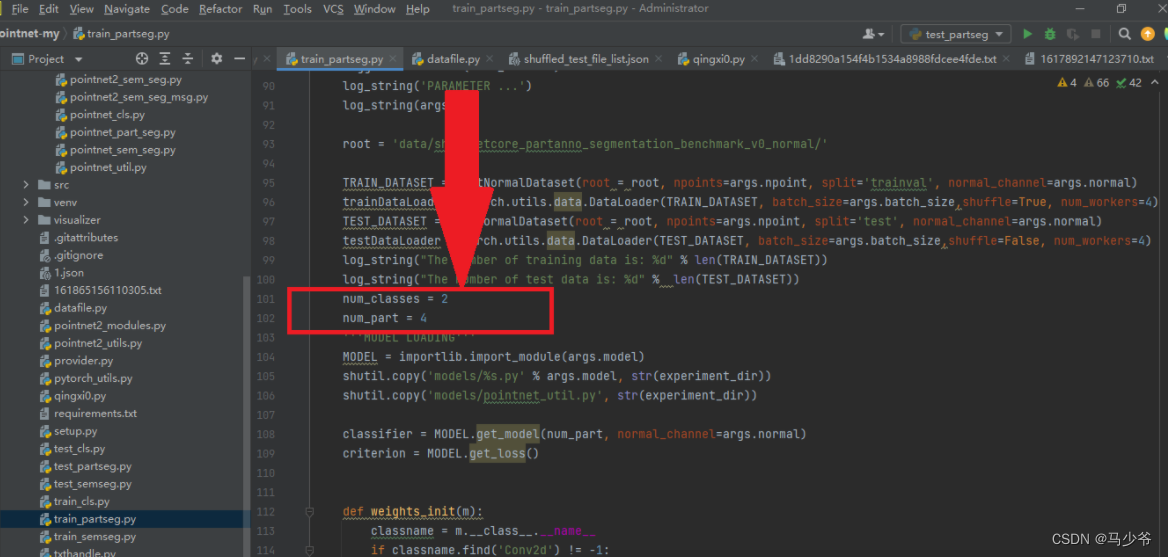
Last , Right click to run the program , If a progress bar appears, it indicates that the model has been successfully improved , You can run through your own data set !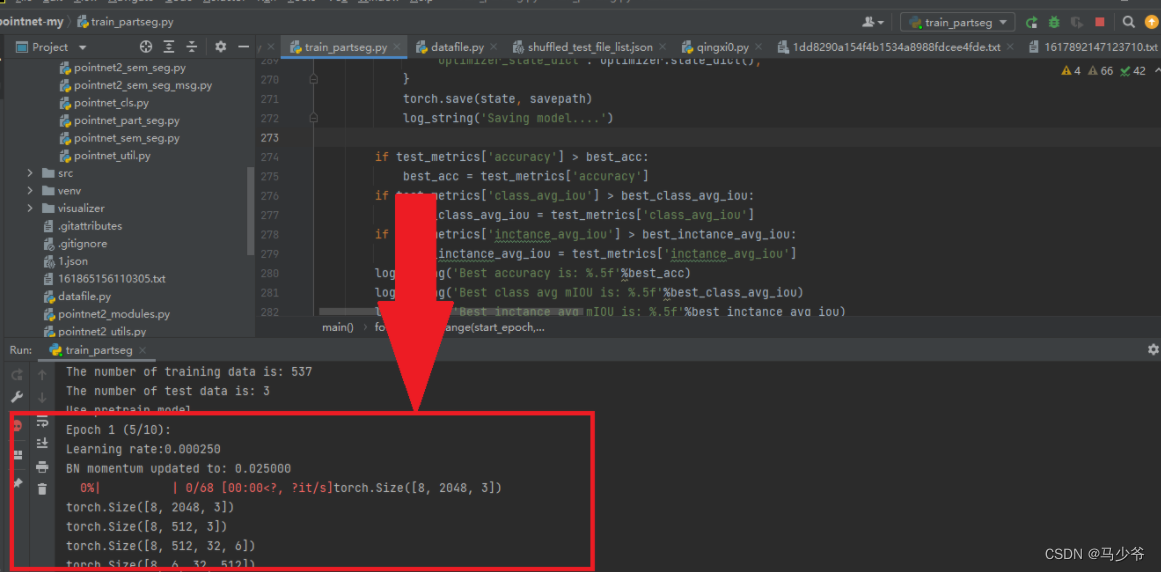
Four 、 Print model prediction data
After training the model with our own data set , Will use the name test_partseg Of python File to test the model , In order to better understand the model and test the effect of the model , Sometimes we need to print out the point cloud coordinates predicted by the model . Here is given test_partseg File modification method and operation results .
4.1 Test model code modification
First we need to find the python file , Then make the same changes as above, as shown in the following two places :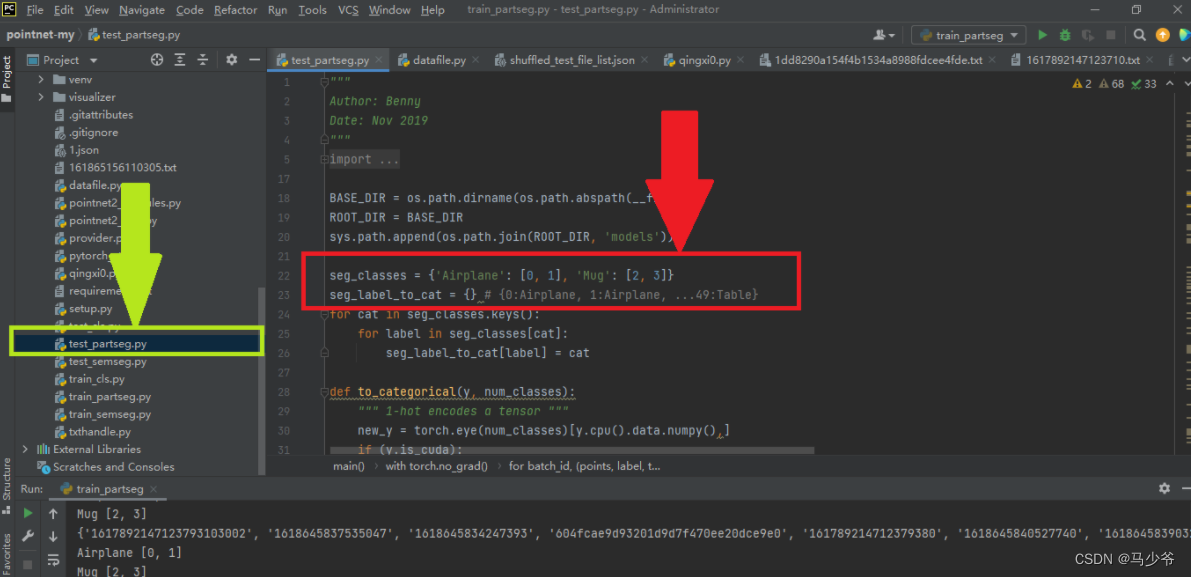
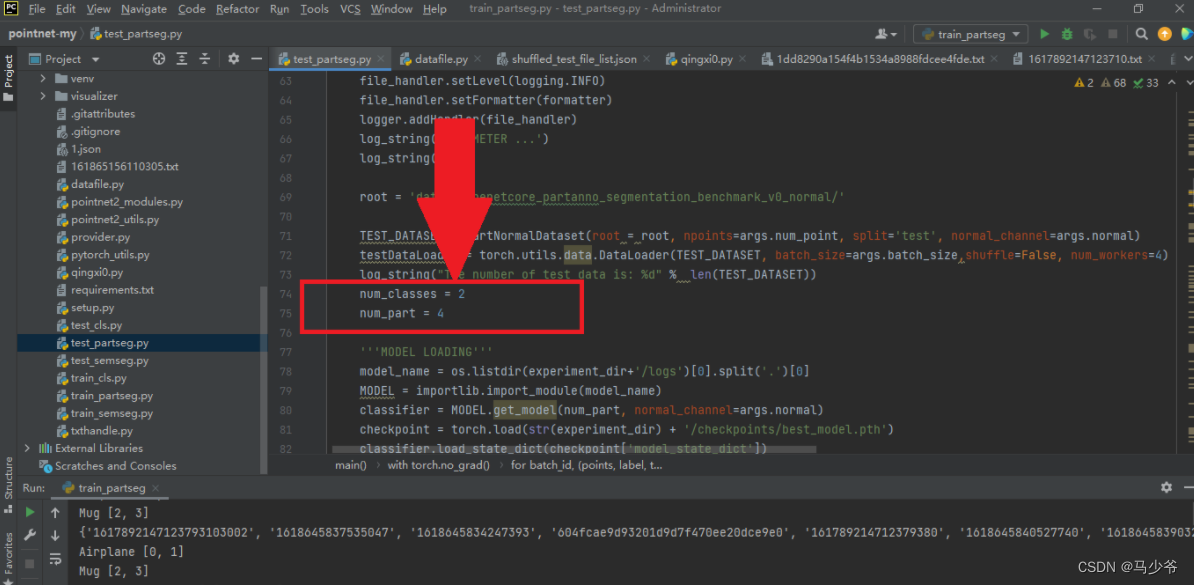
Then we need to write code to print out the coordinates with different labels after classification , In this example, we want to print the coordinate points of four categories of two objects , The code is as follows ( Part of the code ):
for j in aaa:
#print(points1[i,j])
res1= open(r'E:\03797390_0_'+str(i)+'.txt', 'a')
res1.write('\n' + str(points1[i,j]).strip('[]'))
res1.close()
xxxxxx=xxxxxx+1
bbb = numpy.argwhere(cur_pred_val[i] == 1)
for j in bbb:
#print(points1[i, j])
res2 = open(r'E:\03797390_1_' + str(i) + '.txt', 'a')
res2.write('\n' + str(points1[i,j]).strip('[]'))
res2.close()
xxxxxx = xxxxxx + 1
ccc = numpy.argwhere(cur_pred_val[i] == 2)
for j in ccc:
#print(points1[i, j])
res3 = open(r'E:\02691156_2_' + str(i) + '.txt', 'a')
res3.write('\n' + str(points1[i,j]).strip('[]'))
res3.close()
xxxxxx = xxxxxx + 1
ddd = numpy.argwhere(cur_pred_val[i] == 3)
for j in ddd:
#print(points1[i, j])
res4 = open(r'E:\02691156_3_' + str(i) + '.txt', 'a')
res4.write('\n' + str(points1[i,j]).strip('[]'))
res4.close()
xxxxxx = xxxxxx + 1
After the modification, run the program and find that the results can be displayed , Indicates that the modification was successful !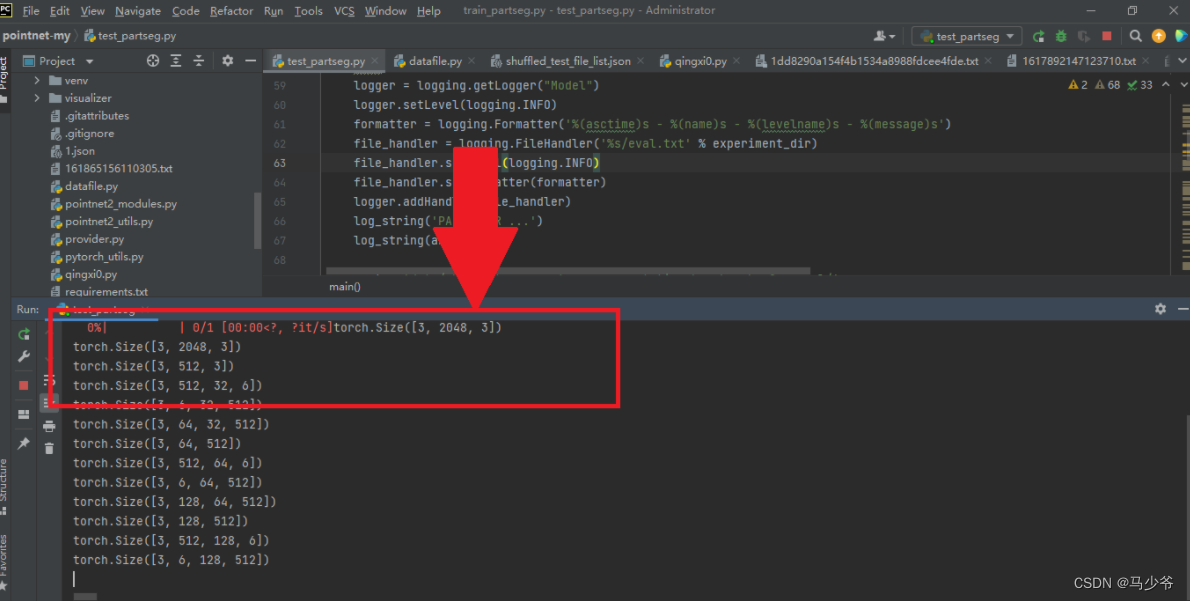
The format of the printed point cloud coordinates is as follows :
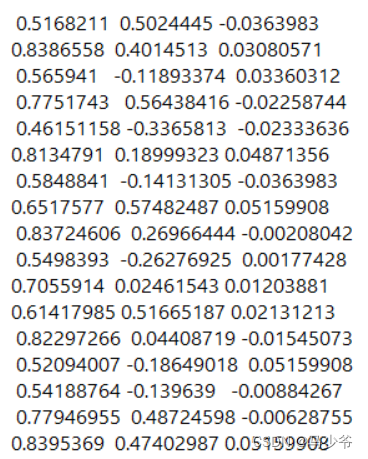
reference :https://blog.csdn.net/weixin_44603934/article/details/123589948
边栏推荐
- 实战模拟│JWT 登录认证
- Jetpack compose tutorial
- The page element is vertically and horizontally centered, realizing the vertical and horizontal centering of known or unknown width.
- Is it safe to open an account at Great Wall Securities? How to open an account when buying stocks
- Allure of pytest visual test report
- 1007 Maximum Subsequence Sum(25 分)(PAT甲级)
- 有关架构设计的个人思考(本文后续不断修改更新)
- Niuke Xiaobai month race 7 F question
- 水晶光电:长安深蓝SL03的AR-HUD产品由公司供应
- 项目中遇到的线上数据迁移方案1---总体思路整理和技术梳理
猜你喜欢

Lm10 cosine wave homeopathic grid strategy

Introduction to polyfit software

What should we pay attention to when doing social media marketing? Here is the success secret of shopline sellers!
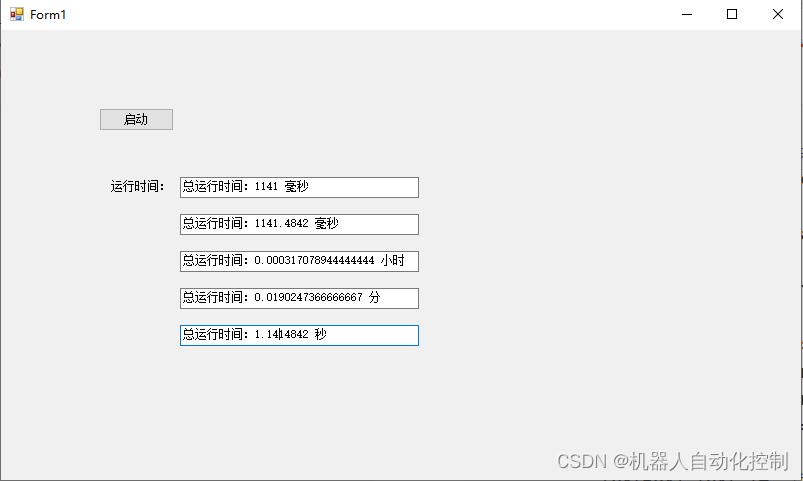
C# 使用StopWatch测量程序运行时间
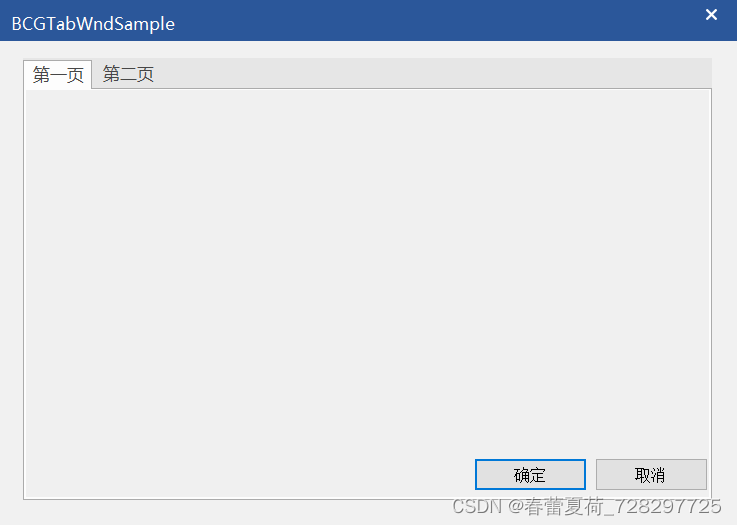
BCG 使用之CBCGPTabWnd控件(相当于MFC TabControl)

Several methods of online database migration
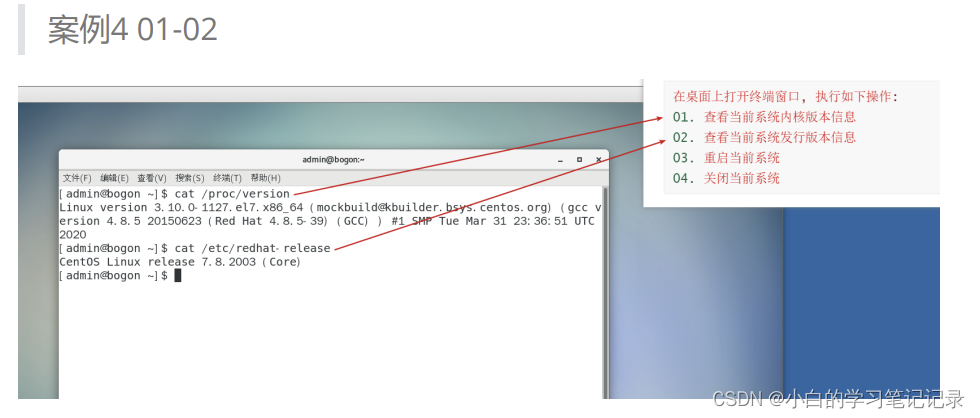
黑马程序员-软件测试--08阶段2-linux和数据库-23-30-进程端口相关,修改文件权限,端口号信息的获取,程序和进程相关操作,linux命令案例
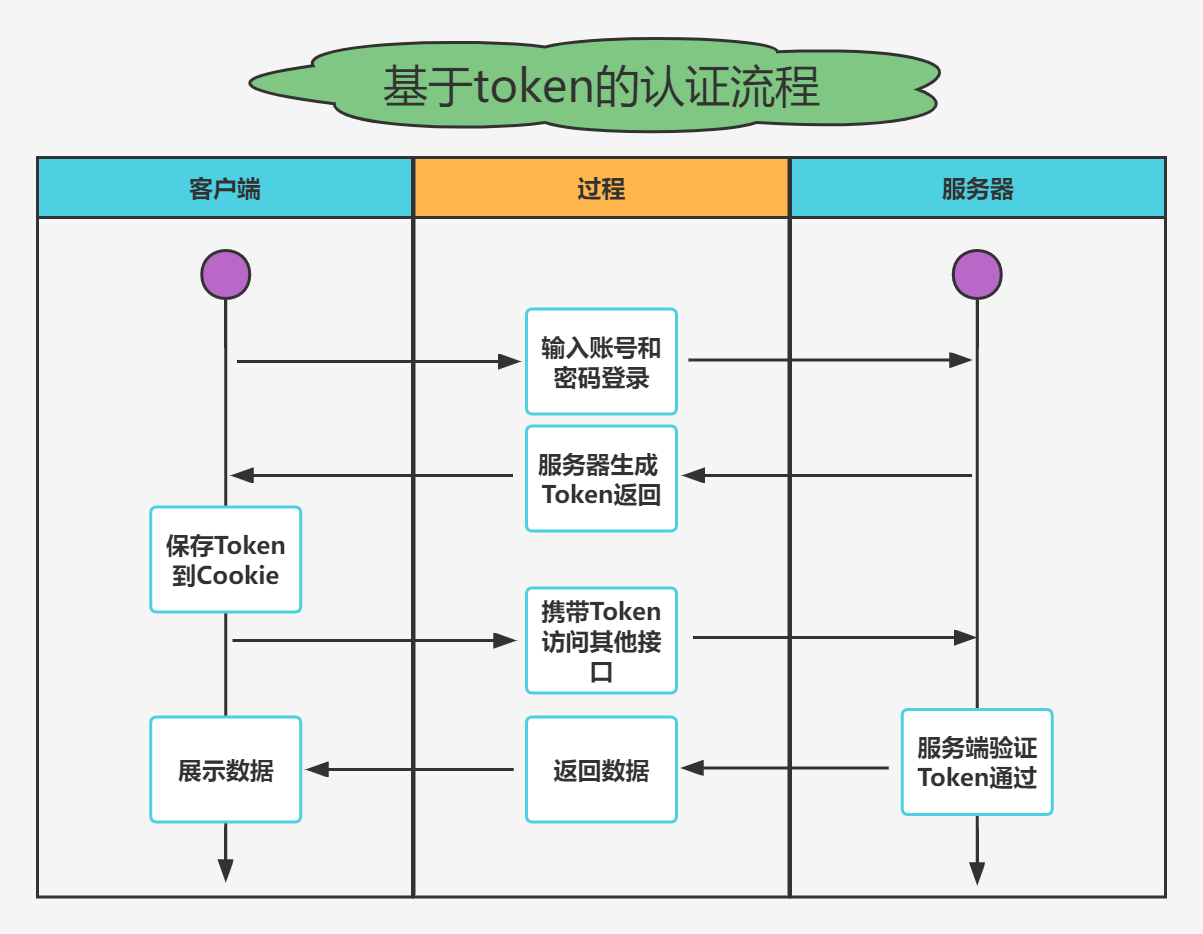
实战模拟│JWT 登录认证
Some thoughts on whether the judgment point is located in the contour

如何使用Async-Awati异步任務處理代替BackgroundWorker?
随机推荐
Lm10 cosine wave homeopathic grid strategy
Chrome开发工具:VMxxx文件是什么鬼
QT realizes interface sliding switching effect
Find the nth power of 2
Abc229 summary (connected component count of the longest continuous character graph in the interval)
项目中遇到的线上数据迁移方案1---总体思路整理和技术梳理
FPGA timing constraint sharing 01_ Brief description of the four steps
1002. A+b for Polynomials (25) (PAT class a)
Oracle with as ora-00903: invalid table name multi report error
How test engineers "attack the city" (Part I)
An example of multi module collaboration based on NCF
Basic use of kotlin
【问题】druid报异常sql injection violation, part alway true condition not allow 解决方案
1007 Maximum Subsequence Sum(25 分)(PAT甲级)
Several methods of online database migration
Opencv functions and methods related to binary threshold processing are summarized for comparison and use
1005 Spell It Right(20 分)(PAT甲级)
Euler function
Introduction to ACM combination counting
Educational Codeforces Round 22 E. Army Creation
